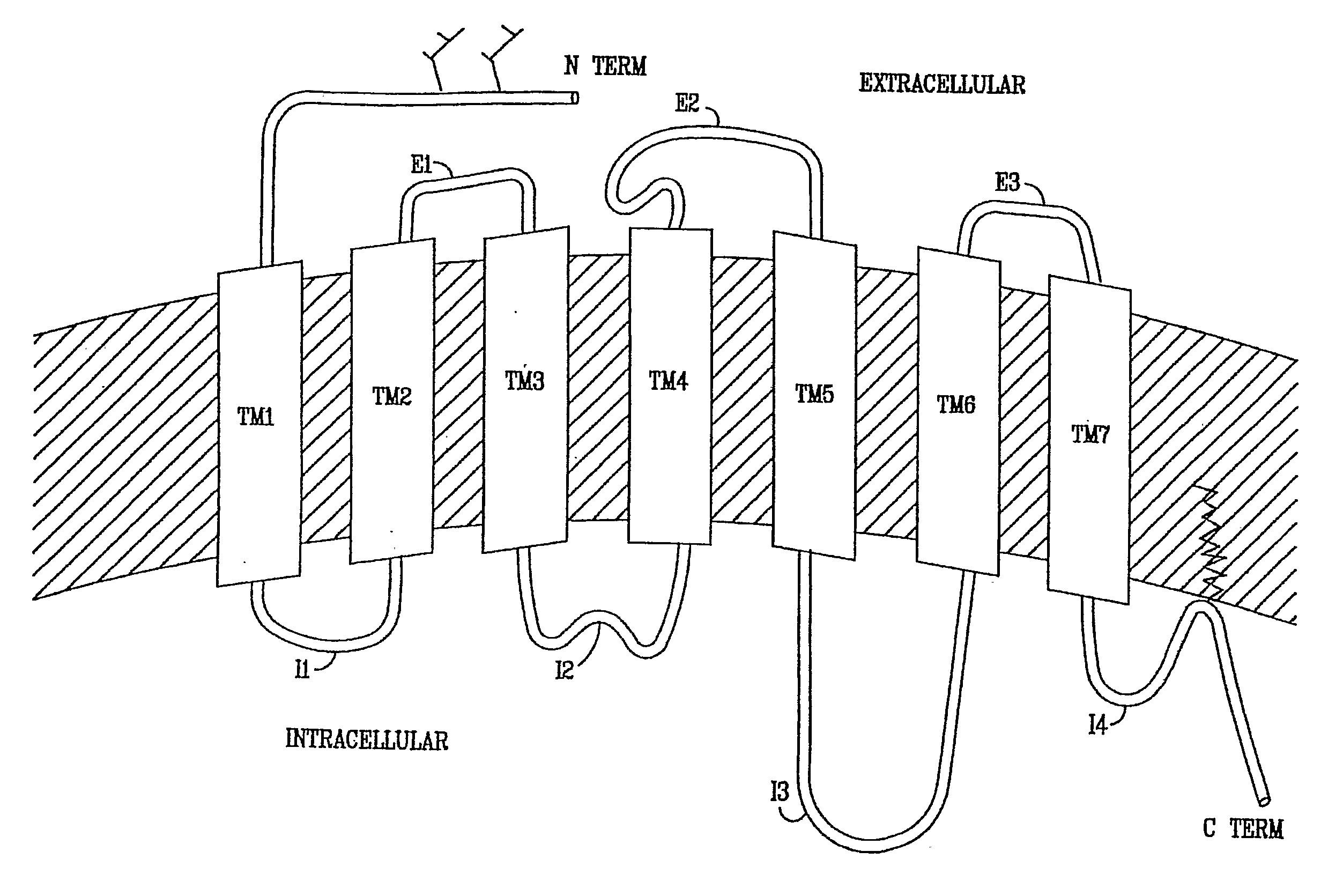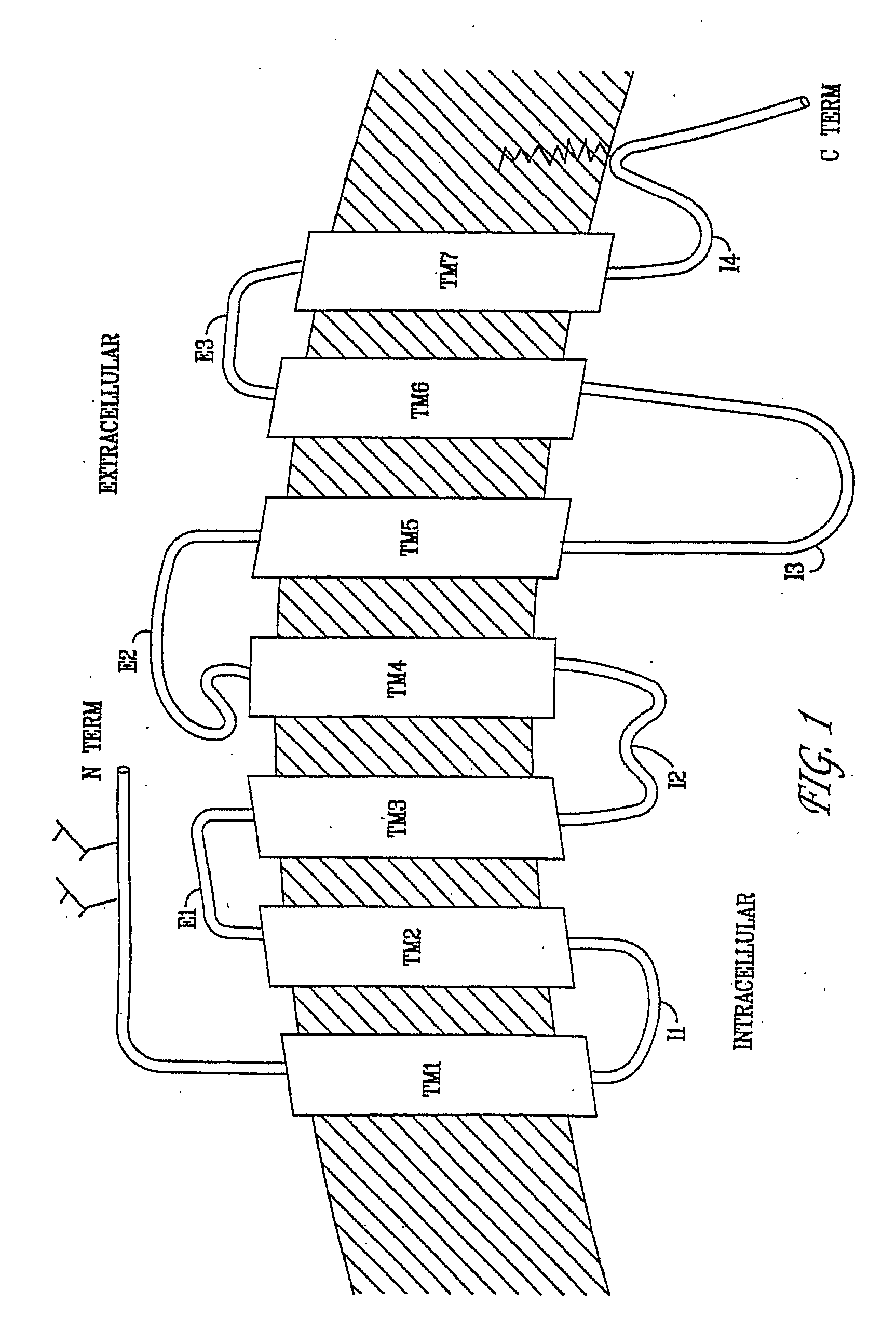Diaryl and Arylheteroaryl Urea Derivatives as Modulators of 5-Ht2a Serotonin Receptor Useful for the Prophylaxis or Treatment of Progressive Multifocal Leukoencephalopathy
a technology of arylheteroaryl urea and modulator of 5-ht2a serotonin receptor, which is applied in the direction of immunological disorders, drug compositions, biocide, etc., and can solve problems such as ineffective therapy
- Summary
- Abstract
- Description
- Claims
- Application Information
AI Technical Summary
Benefits of technology
Problems solved by technology
Method used
Image
Examples
example 1
[0460]Receptor cDNA
A. Construction of Constitutively Active 5-HT2C Receptor cDNA
[0461]1. Endogenous Human 5-HT2C
[0462]The cDNA encoding endogenous human 5-HT2C receptor was obtained from human brain poly-A+ RNA by RT-PCR. The 5′ and 3′ primers were derived from the 5′ and 3′ untranslated regions and contained the following sequences:
5′-GACCTCGAGGTTGCTTAAGACTGAAGCA-3′(SEQ.ID.NO.: 1)5′-ATTTCTAGACATATGTAGCTTGTACCGT-3′(SEQ.ID.NO.: 2)
PCR was performed using either TaqPlus™ precision polymerase (Stratagene) or rTth™ polymerase (Perkin Elmer) with the buffer systems provided by the manufacturers, 0.25 μM of each primer, and 0.2 mM of each of the four (4) nucleotides. The cycle condition was 30 cycles of 94° C. for 1 minute, 57° C. for 1 minute and 72° C. for 2 minutes. The 1.5 kb PCR fragment was digested with Xho I and Xba I and subcloned into the Sal I-Xba I site of pBluescript.
[0463]The derived cDNA clones were fully sequenced and found to correspond to published sequences.
2. AP-1 cDNA...
example 2
Receptor Expression
[0486]A. pCMV
[0487]A variety of expression vectors are available to those in the art, for purposes of producing a polypeptide of interest in a cell. One suitable vector is pCMV, which is used in certain embodiments. This vector was deposited with the American Type Culture Collection (ATCC) on Oct. 13, 1998 (10801 University Blvd., Manassas, Va. 20110-2209 USA) under the provisions of the Budapest Treaty for the International Recognition of the Deposit of Microorganisms for the Purpose of Patent Procedure. The DNA was tested by the ATCC and determined to be viable. The ATCC has assigned the following deposit number to pCMV: ATCC #203351. See FIG. 8. Other suitable expression vectors will be readily apparent to those of ordinary skill in the art.
[0488]B. Transfection Procedure
[0489]For the generic assay ([35S]GTPγS; Example 3) and the antagonist binding assay (mesulergine; Example 3), transfection of COS-7 or 293T cells was accomplished using the following protocol....
example 3
GTP Membrane Binding Scintillation Proximity Assay
[0491]The advantages of using [35S]GTPγS binding to measure constitutive activation are that: (a) [35S]GTPγS binding is generically applicable to all G protein-coupled receptors; and (b) [35S]GTPγS binding is proximal at the membrane surface, thereby making it less likely to pick-up molecules which affect the intracellular cascade. The assay utilizes the ability of G protein-coupled receptors to stimulate [35S]GTPγS binding to membranes expressing the relevant receptors. Therefore, the assay may be used to directly screen compounds at the disclosed serotonin receptors.
[0492]FIG. 9 demonstrates the utility of a scintillation proximity assay to monitor the binding of [35S]GTPγS to membranes expressing, e.g., the endogenous human 5-HT2C receptor expressed in COS cells. In brief, a preferred protocol for the assay is such that the assay was incubated in 20 mM HEPES, pH 7.4, binding buffer with 0.3 nM [35S]GTPγS and 12.5 μg membrane prote...
PUM
 Login to View More
Login to View More Abstract
Description
Claims
Application Information
 Login to View More
Login to View More - R&D
- Intellectual Property
- Life Sciences
- Materials
- Tech Scout
- Unparalleled Data Quality
- Higher Quality Content
- 60% Fewer Hallucinations
Browse by: Latest US Patents, China's latest patents, Technical Efficacy Thesaurus, Application Domain, Technology Topic, Popular Technical Reports.
© 2025 PatSnap. All rights reserved.Legal|Privacy policy|Modern Slavery Act Transparency Statement|Sitemap|About US| Contact US: help@patsnap.com



